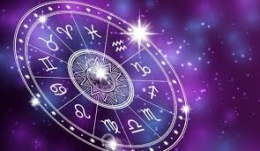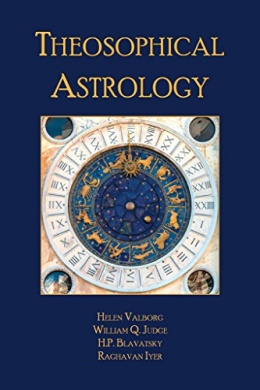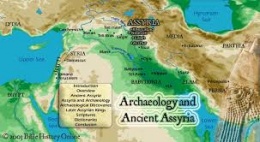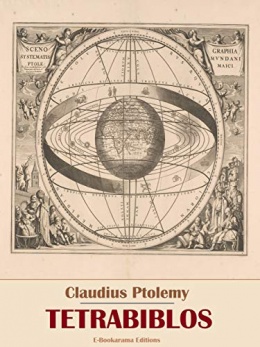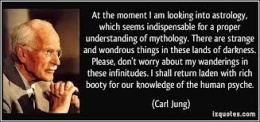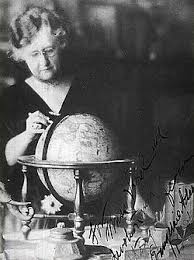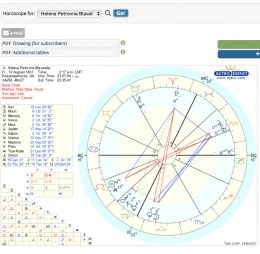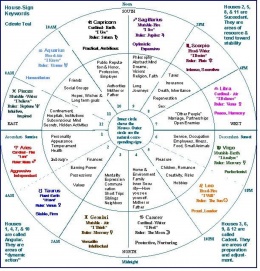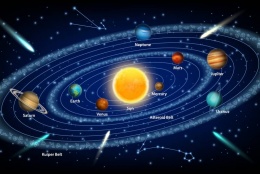Astrology
THIS PAGE IS UNDER CONSTRUCTION
THIS PAGE IS UNDER CONSTRUCTION
Astrology is the study of the movement of the stars and planets through the heavens and how their energies affect us from birth to death. Ancient sources tell us that all the other sciences are outgrowths of astrology, including astronomy, thus being the oldest science known to man. [1][2]
It is an applied science, insofar as it is based on astronomy, an exact science, insofar as its judgements are based on mathematical calculations; and an empirical science, insofar as its deductions are based on data gathered over the course of time. Its method is a horoscope, which is a diagram of the heavens at a particular moment of time in a particular place and read according to well-established rules free of divination derived from thousands of years of observation. [3]
Like all sciences, astrology is a complex of symbols and principles of interrelationships. And like all science, astrology is based on experience and observations and on assumptions about the nature of reality and the universe. It shares with all sciences the assumption that there are discoverable laws of nature that are invariant, at least over long periods of time. In light of Theosophical understanding, astrology is a science requiring all the rigor, intense observation and complex principles that any science must possess. And like any science, its observations are grounded in a philosophical worldview. Fundamental to this world view is the ancient Hermetic axiom “As above, so below”, teaching that analogy and correspondence are methods of fundamental to understanding the relationships between microcosm and macrocosm, self and the world. [4]
Astrology and Theosophy
Theosophy teaches that all life, whether in mineral, plant, animal or man, is the One Life. This One Life, long before it begins its work in mineral matter, differentiates itself into seven great streams, each of which has its own special and unchanging characteristics. These fundamental types are known as the Rays. These seven types are to be found among men, and we all belong to one or other of them. Fundamental differences of this sort in the human race have always been recognized and astrologers classify men under the names of the planets as Jupiter men, Mars men, Venus or Saturn men, and so on.[5]
When the primordial matter or spirit, which in the future was to become ourselves, first emerged from undifferentiated infinity, it issued through seven channels, as water might flow from a cistern through seven pipes, each of which, containing its peculiar coloring matter, would so tinge the water that passed through it that it would forever after be distinguishable from the water of the other pipes. Through all the successive kingdoms, the elemental, the mineral, the vegetable, the animal, the Rays are always distinct one from another, as they are also distinct in man, though in the lower kingdoms the influence of the Ray naturally acts in a somewhat different manner. Since in them there is no individualization, it is obvious that the whole of one species of animals, for example, must be on the same Ray.[6]
Theosophy further teaches that everything is radiating influence on its surroundings, and these surroundings are all pouring influence upon it in return. Sun, moon, stars, angels, men, animals, trees, rocks - everything is pouring out a ceaseless stream of vibrations, each of its own characteristic type, not in the physical world only, but in other and subtler worlds as well. Our physical senses can appreciate only a limited number of such radiations. We readily feel the heat poured forth by the sun or by a fire, but we are usually not conscious of the fact that we ourselves are constantly radiating heat. [7]
In addition, the dynamic dilemma of duality – the tension of opposites – is revealed in the cosmic structure of our solar system. The planets represent the interface between the inner and outer worlds, between the force of the stars streaming down through the planets in a centripetal motion toward the Sun spiraling out through the planets to our space. These are the involuntary and evolutionary forces respectively. [8] H.P..Blavatsky makes a related statement regarding the journey of the soul:
”The planetary origin of the Monad (Soul) and its faculties was taught by the Gnostics. On its way to the earth, on its way back to the earth, each Soul is born in and from the ‘Boundless Light’ and had to pass through the ‘seven planetary regions both ways’.”[9]
The seven sacred planets in their geometric relationship represent both the cosmic (solar system) antenna receiver attuned to greater networks of kosmic (galactic) information or radiational nourishment, and the planetary structure of solar emergence which is the order of unfoldment and release of potentials.
Esoteric Astrology
Esoteric Astrology deals with the evolution of the soul and with the whole spectrum of personality limitations which obstruct enlightenment. It is therefore concerned with:
- The dissolution of limitations and evocation of spiritual will.
- The expansion of consciousness and the wise expression of love.
- The creative use of the higher mind.
- The resolution of conflict and ugliness into harmony and beauty.
- Right use of the lower mind leading to freedom from illusion.
- Purification of the emotions and devotion to truth.
- Application of the formulas for unifying the soul and personality.
The esoteric astrologer recognizes the seven-fold constitution of man and the universe as the primary key to understanding. All astrological forces are interpreted as expressions of seven basic ray of energy and their combinations. Thus, each sign, house, planet, and aspect is evaluated in terms of the seven rays. These form the major notes which color the character and life expression on personal and spiritual levels. Each ray type produces a multi-dimensional personality pattern which is modified by combination with other rays. [10]
| PLANET | RAY | KEY WORDS |
|---|---|---|
| Sun ☉ | First Ray | Will or Power: The monadic will to focus, center, lead or come to be |
| Venus ♀ | Second Ray | Love-Wisdom: The sharing soul of unselfishness, inclusiveness, intuition |
| Mercury ☿ | Third Ray | Active Intelligence: The personality or exoteric face of problem solving in civilization |
| Earth and Moon ☽ | Fourth Ray | Harmony through Conflict: The balance and harmony between the inwardly directed rays (the first three rays) and the outwardly directed rays (the last three rays), the artist. Balance between the manifest and the unmanifest |
| Mars ♂ | Fifth Ray | Concrete Science: The matrixing of information and hardware technology which attempts to conquer nature. Science and concrete knowledge. |
| Jupiter ♃ | Sixth Ray | Idealism and Devotion; The inspirations and aspirations of the mystic, self-sacrificing service to the world. |
| Saturn ♄ | Seventh Ray | Ceremonial Order: a) Rhythm and harmony within orderly structure, b) Establishing foundations and facilitating emerging nuclei or matrices of new age activity, c) Synergetic synthesis of ideals and their physical manifestation. |
The planets are thus a natural system of knowledge, which organizes and orders information, linking inner-space with outer-space, and resolving the tension of opposites in a seven-fold synthesis. [11]
The rising sign in esoteric astrology symbolizes the soul purpose and cooperates with the spiritual side of the sacred planets. If this energy is correctly used, it raises the personality into union with the soul. [12]
History
The existence of Assyrian tablets inscribed with texts relating partly to astrology and partly to astronomy was made known to the world in 1865. The excavations on the site of Nineveh - an ancient Assyrian city of Upper Mesopotamia, located on the outskirts of Mosul in modern-day northern Iraq - discovered large slabs covered with bas-reliefs and cuneiform inscriptions. The majority of the cuneiform inscriptions proved to be prophecies by the royal astrologers based on observations of the heavens. Mesopotamia and the civilization of Chaldea, in itself the foundation of those of Babylonia and Assyria, show a complete picture of astronomical observations and astrological interpretations. [13][14]
Work is still being done on the dating of the earliest times records and observations. Earliest dating of the remains in the Mesopotamian kingdom could be 4698 B..C; and a more favorite dating for coherent recordings that of a little more than 2000 B.C. But the reign of Argon, one of the earliest of the Sumerian kings, is fairly well authenticated and is said to have begun in 2872 B.C. [15]
Thus, since the ancient times, stargazing or astronomy has been closely linked with the attempts to understand earthly events. Assyrian tablets during the reign of Ashurbanipal in the 7th century BC showed reports from court astrologers on the position of the planets and their implications on human affairs.[16]
As in ancient Chaldea, astrology, astronomy, and religion went hand in hand in ancient China. The astrologer who was also an astronomer, was part of the official government service. Most of the records were written under the Han and Tang dynasties referring to events between 3000 and 4000 BC. but their basis is legend and not historical fact. [17]
Ancient Hindu astrology is not so well authenticated. For some time, it was considered that Indian astrology was inherited from the Greeks and has some link with the conquests of Alexander the Great in the third century BC. [18]
Ancient Egyptians knew something of astrology, since in the 12th Dynasty, about 2000 BC, recognizable horoscopes were on coffin portraits and temple ceilings. Early Republican Rome ignored astrology but flourished during the first two centuries AD. [19]
The most comprehensive early work on astrology, Tetrabiblios, was written by the astronomer Ptolemy – who lived in the city of Alexandria in the Roman province of Egypt under the rule of the roman Empire - in the first half of the 2nd century BC. [20]
Prior and during the Middle Ages, astrology was the principal science in Europe. Every king had his astrologer. Nostradamus predicted future events using astrology, as well as a crystal ball. Astrologers cast birth charts of royal children; children were betrothed based on their birth charts. Special astrological charts were cast to foretell the outcome of events. These early astrologers were primarily interested in using astrology as a tool for predictions. [21]
Thus, astrologers have been employed throughout history by both governments and religious groups. The early Roman Catholic Church used astrology and the US government employed the services of an astrologer during World War II. [22]
There was renewed interest in astrology in the early part of the 20th century and astrology has undergone a remarkable resurgence and is now – as Carl Jung predicted – knocking again at the doors of academe. Astrologers are attempting to verify traditional doctrine by scientific methods. In a number of countries, astrology is once again being taught at the university level. [23]
Carl Jung was responsible for bringing astrology into psychoanalysis. Astrology was for Jung the summation of all ancient knowledge of psychology. Intuitively, the twelve signs of the zodiac worked as a compendium of psychic realities. They configure what Jung called “archetypes”, which are psychological patterns or models that inhabit the collective unconscious. [24] >[25]
That astrology is legal in all fifty states of the United States is thanks to Evangeline Adams. She was able to prove to an attorney that astrology was real and convinced the judge by providing a personality analysis of the judge’s son which she did with an accuracy that the judge threw the case against her out of his court. [26][27][28]
Casting the Birth Chart
Astrologers believe that an individual’s personality traits and the general direction of life are revealed in the positions of the stars and planets at the moment of birth. To interpret the potentials of a person and to advise how these potentials might be developed, astrologers depend on the birth chart. A completed birth chart is a diagram of the heavens as they appeared on a particular date at a certain time, and from a specific place. [29]
Thus, the birth chart is a blueprint of one’s character and character is destiny. Still, everyone can change by changing attitudes and patterns of behavior and herby changing one’s destiny. In addition, the chart shows one’s spirit. An understanding of planetary influences allows everyone to take his life into his own hands and intelligently use the planetary influences that will help in one’s evolution. [30]
Interest in astrology is a necessary part of humanity’s progress towards enlightenment, for true astrology is the science of the soul. Understanding of the planetary forces playing on the souls and of the soul’s lesson in incarnation, can be a great help to those seeking spiritual enfoldment. [31]
The Soul Lesson
The soul lesson is shown primarily by the element of the sign in which the Sun is placed at birth. [32]
WATER ELEMENT: Water teaches the lesson of peace and the control of the astral or sensational body. The command of this element is essential before any progress can be made on the spiritual path.
- Cancer: Learning to still the turbulent emotional side of one’s nature and to seek continually that place of inner peace where heavenly truth will dawn upon the soul.
- Scorpio: The soul has to recognize and control the hidden fire within one’s own being, the creative or destructive fire of the intense desire nature.
- Pisces: The soul is learning especially the lesson of inner peace; it’s important to control one’s thoughts and to still the restless seeking mind.
AIR ELEMENT: Air teaches control of the mind. The air signs are all concerned with close relationships to others.
- Gemini: The soul lesson is the understanding of the brotherhood of the spirit. They need to develop powers of concentration and steadfastness. Controlled breathing and meditation help.
- Libra: The soul’s lesson is to learn to be absolutely true and loyal to one’s own inner light, to raise one’s mind above all the conflict and to find the point of balance in one’s heart.
- Aquarius: The soul’s task is to awaken to the consciousness of the world of spirit and of the spiritual laws which govern life.
FIRE ELEMENT: Fire signs have returned to the physical life to learn the lesson of love and teach the soul how to work divine magic through the creative power of love.
- Aries: Teaches the lesson of love in action; the soul learns to think before acting and becomes aware of the feelings and needs of others.
- Leo: The soul has to develop the heart-center, learning how to use the mind in the heart. Souls with the Sun in Leo need to learn to govern wisely the output of energy.
- Sagittarius: The should learn to touch the plane of creative thought. They have the urge to find truth and discover the secrets of the universe. They should train the mental, emotional and physical body to become tranquil.
EARTH ELEMENT: Earth is associated with the physical life and the practical side of existence. The special lesson of souls with the Sun in the earth element is that of service.
- Taurus: The soul learns to understand the responsibility and spiritual significance of money. They have to be careful not be too strongly attached to possessions.
- Virgo: The soul’s mission is some kind of service; it comes to earth to learn to serve with wisdom and discrimination. These souls are true seekers of wisdom, longing to find the elusive secret of perfection.
- Capricorn: The soul is learning the lesson of active service. [33]
- Capricorn: The soul is learning the lesson of active service. [33]
Basic Principles
The study of astrology must start with an understanding of the planets, signs, house, aspects and other energies. [34][35]
Planets are the energies. ”What” is operating.
Signs are ”How” the energies operates. The planets in the signs indicate character – the individual pattern from other lifetimes. The signs show how the energy (the planets) is conditioned and how it operates. The planets in the signs show one’s capacity, ability or power to achieve what is indicated by the nature of the planets.
Houses show “Where” the energy will work; the circumstances. Houses indicate the environmental pattern where one will work out his destiny. They also indicate the opportunities offered by that environment.
Aspects (the flow of force between the planets) show one’s use or abuse of the energies operating in every person’s magnetic field. They show dispositions and the predispositions to action and reaction.
Thus, the horoscope is an X-ray of the personality, it shows how a person operates within his magnetic fields. We are miniature universes. [36]
Planets
The Solar System is a unit and each body in it is therefore a constituent of that unit. Each planet performs a specific function or represents particular principles in relation to the whole. The name of each planet gives a clue to its nature, for each is called after the gods or goddesses of mythology. [37]
The Moon takes about one month to go through all twelve signs, the Sun takes a year. It takes Mercury approximately one year to go through all of the twelve signs. Venus travels in a sign approximately 23 days to a little over 2 months depending on its motion. Mars takes about 2 years to go through all 12 signs, staying in one sign for about 1.5 months. It takes Jupiter about 12 years to go through the 12 signs, staying in one sign an average of one year. Saturn takes approximately 29 1/2 years to go through all twelve signs, staying in one sign for about 2 1/2 years. Uranus moves through all twelve signs of the Zodiac in approximately 84 years, staying in one sign about 7 years. It takes Neptune about 165 years to go through all 12 signs, staying in each one for approximately 14 years. Pluto takes approximately 248 years to go through all 12 signs, staying in each one from 14 to 30 years.
| PLANET | URGE | KEY WORDS |
|---|---|---|
| Moon ☽ | to change | fluctuation, emotionality, response |
| Mercury ☿ | to communicate | communication, mentality, transport |
| Venus ♀ | for love and beauty | harmony, love, beauty |
| Sun ☉ | for self-expression/to shine/to manifest | power, vitality, self-expression |
| Mars ♂ | for aggression | energy, heat, activation |
| Jupiter ♃ | for expansion, knowledge, wisdom, compassion | expansion, optimism, preservation |
| Saturn ♄ | for discipline | limitation, constriction, foundation |
| Uranus ♅ | for rebellion/towards rebellious freedom | unexpected, sudden, disruptive, revolution, change |
| Neptune ♆ | for deception and self-deception; toward art and the non-material, the non-confined, the mystical, the spiritual | nebulousness, impressionability, inspiration |
| Pluto ♇ | for rebirth/regeneration; to quickly eliminate things not wanted | renewal, regeneration, elimination |
The Signs
In astrological terminology, a horoscope is called by many names: natal chart, map, wheel. However, the signs of the Zodiac always follow an unchanging pattern. The dividing line between two signs is called a cusp. Each of the twelve signs of the Zodiac represents certain unique positive and negative characteristics of human behavior and development. [38]
| SIGN | STATE OF CONSCIOUSNESS | KEY ATTRIBUTE |
|---|---|---|
| Aries ♈ - C |
I am | assertively |
| Taurus ♉ - F |
I have | enduringly, possessively |
| Gemini ♊ - M |
I think | communicatively |
| Cancer ♋ - C |
I feel | protectively, cautiously |
| Leo ♌ + F |
I will | creatively, joyfully |
| Virgo ♍ - M |
I analyze | critically, detailed; analytically |
Libra ♎ + C |
I balance | harmoniously; unitedly |
| Scorpio ♏ - F |
I desire | passionately, penetrately, secretively |
| Sagittarius♐ + M |
I perceive/seek | philosophically, widely, deeply |
| Capricorn ♑ - C |
I use/utilize | prudently; aspiringly |
Aquarius ♒ + F |
I understand/know | coolly, detachedly; scientifically |
| Pisces ♓ - M |
I believe | nebulously, inspirationally, confusedly |
The signs are also grouped into two more fundamental arrangements determined by the geometric layout of the Zodiac. There are four triplicities or elements - fire, earth, air or water, which deal with the tendencies of the temperament. [39]
Fire (Aries, Leo, Sagittarius) |
Earth (Taurus, Virgo, Capricorn) |
Air (Gemini, Libra, Aquarius) |
Water (Cancer, Scorpio, Pisces) |
|---|---|---|---|
| Energetic | Practical | Intellectual | Emotional |
| Courageous | Skillful | Social | Intuitive |
| Passionate | Down to Earth | Thoughtful | Romantic |
There are three quadruplicities, also called <qualities> dividing into the areas of cardinal, fixed and mutable, and each of these contains four signs. Cardinal houses represent the initiation of news plans or projects, fixed houses are stabilizing influences for the implementation of those plans, mutable houses provide the ability to follow through on the project.[40]
| Cardinal (Aries, Cancer, Libra, Capricorn) | Fixed (Taurus, Leo, Scorpio, Aquarius) | Mutable (Gemini, Virgo, Sagittarius, Pisces) |
|---|---|---|
| Interested in crisis/activity/what is going on | Interested in values and ideas | Interested in people and relationships |
| Independent | Persistent | Adaptable |
| Impatient | Consistent | Flexible |
| Go-Getting | Reliable | Mercurial |
| Efficacious | Focused | Harmonizing |
| Self-starters | Determined | Pliable |
The Houses
The area of the birth chart between the Earth at the center and the surrounding ecliptic is divided into sections called houses. There are twelve houses, and unlike the twelve signs of the zodiac, which revolve around the chart, the house positions are fixed. Depending on the systems, the houses occupy twelve equal segments of 30 degrees each (Equal House System) or each house has a different size and the system (e.g. Placidus, Koch) determines the size of the house. The houses are numbered, starting from the ascendant – always the beginning, or cusp of the first house – and proceeding counterclockwise. The descendant is always the cusp of the seventh house. [41]
| HOUSE | SIGN | ATTRIBUTE |
|---|---|---|
| 1 | Aries ♈ |
Self (interests), personality, natural disposition, worldly outlook |
| 2 | Taurus ♉ |
Wealth, memory tract, financial affairs, possibility of loss or gain of things |
| 3 | Gemini ♊ |
brothers and sisters, journeys, mental inclinations, neighbors |
| 4 | Cancer ♋ |
Mother, home environment, old age, conditions at the end of events/relationships |
| 5 | Leo ♌ |
Creation, recreation, procreation, children, games and gambling, speculation, hobbies |
| 6 | Virgo ♍ |
Sickness, service, servants; work, hygiene, living wealth, small animals, limitations caused by partnerships |
| 7 | Libra ♎ |
Marriage, open enemies, partnerships, general public, friends in foreign countries, mentality of one’s children |
| 8 | Scorpio ♏ |
All matters concerned with death, legacies, astral experiences, other people’s money, tax; gains through marriage, occult |
| 9 | Sagittarius ♐ |
Higher education, philosophy, law, long journeys; foreign countries, spiritual tendencies; dreams; key methods of expanding one’s consciousness |
| 10 | Capricorn ♑ |
Father and authoritarian figures; one’s profession; the house of destiny, government, honor and fame; the rewards of Karma |
| 11 | Aquarius ♒ |
Friends and associates, aspirations, hopes; organizations |
| 12 | Pisces ♓ |
Heaven and hell going, self-help and self-undoing; unexpected or unforeseen trouble, confinements, seclusion, exile, secret sorrows and/or enemies; hospitals, large animals; house of worries; |
An additional level of information are the two energies, masculine and feminine, also called yang and yin. A strong preponderance of planets in masculine signs – all the fire and air signs - indicates a self-propelling person with positive aggressive tendencies. The feminine signs include all the earth and water signs and indicate passivity. If a strong preponderance of planets occurs in passive signs, the person might not manifest him- or herself aggressively but can possess great strength in terms of passive endurance.
The Aspects
One of the most important factors used in astrological interpretation is the “aspect,” or the angle between two celestial bodies from the point of view of the earth. Thus, when two planets are in 120° of each other, they are said to be harmonious, that is, beneficially compatible. When on the other hand, they are 90° to each other, they are said to be inharmonious, that is, the qualities of the planets clash and create conflict. Natal astrology is strongly based on interpretations of the aspects.
The major benefic aspects are 120° (trine), 60° (sextile) and 30° (semi-sextile); while the major inharmonious aspects are 180° (opposition), 90° (square), 45° (semi-square) 135° (quinqunx), and 150° (inconjunct). The conjunction (0°) is said to strengthen the combined qualities of the planets. The strength of the harmony or conflict will depend upon the type of celestial body and “orb” or the exactness of the angle. Thus, aspects involving the Sun and the Moon have greater weights compared to those of Mercury or Venus. [42]
Blavatsky on Astrology
Helena Petrovna Blavatsky or HPB, founder of the Theosophical Society, made several statements about astrology:
In H.P.B.’s Collected Writings she writes
“Astronomy and astrology are twin sisters, that were equally respected and studied in antiquity. It is but yesterday that the dogmatic arrogance of Western astronomers reduced the elder sister to the position of the Cinderella in the household of Science: modern astronomy profits by the woks of ancient astrology and kicks it out of sight."[43]
In Isis Unveiled she compares astrology with astronomy:
"Astrology is a science as infallible as astronomy itself, with the condition, however, that its interpreters must be equally infallible; and it is this condition, sine qua non, so very difficult of realization, that has always proved a stumbling-block to both. Astrology is to exact astronomy what psychology is to exact physiology. In astrology and psychology, one has to step beyond the visible world of matter and enter into the domain of transcendent spirit.”[44]
In volume VI of her Collected Writings H.P.B. states:
"The popular idea seems to be that the planets and the stars exercise a certain influence upon the destiny of man, which the science of Astrology can determine; and that there are means within the reach of that science which can be used to propitiate “the evil stars.” This crude notion, not philosophically understood, leads to two unscientific fallacies. On the one hand it gives rise to a belief in the doctrine of fatality, which says that man has no free-will inasmuch as everything is predetermined, and in the other it leads one to suppose that the laws of Nature are not immutable, since certain propitiatory rites may change the ordinary course of events. These two extreme views induce the “rationalist” to reject “Astrology” as a remnant of the uncivilized condition of our ancestors, since as a of-fact student he refuses to recognize the importance of the saying, “Real philosophy seeks rather to solve than to deny.” It is an axiom of the philosophic student that truth generally lies between the extremes. If one therefore proceeds in this spirit, he will find that there is yet not an unreasonable or unscientific hypothesis which can reconcile all these different views, and which, not unlikely, was what the ancients meant by Astrology. Although a study of this science may enable one to determine what the course of events will be, it cannot necessarily be inferred therefrom that the planets exercise any influence over that course. The clock indicates, it does not influence, the time. And a distant traveller has often to put right his clock so that it may indicate correctly the time of the place he visits. Thus, though the planets may have no hand in changing the destiny of the man, still their position may indicate what that destiny is likely to be.”[45]
Major Astrologer who were Theosophists
Alice Bailey who left the Theosophical Society in 1920, started at the time receiving channeled messages from one of Blavatsky’s minor Masters, Djwal Khool, “the Tibetan”, who told her that she was in service to a spiritual hierarchy and that she was given a secret mission to work for the benefit of mankind in its spiritual evolution. In 1923, Bailey founded the Arcane School, and her messages from Djwal Khul began to mount up. Her enormous output around a vision of mankind’s spiritual development culminating in a global federation embodying a universal brotherhood. Bailey was one of the astrological authors who spoke of a coming age of Aquarius and believed that its messiah, the Buddha Maitreya, was about to return. [46] Most of her books can be found online. In her book Esoteric Astrology she discusses among other topics the Zodiac and the Rays, the nature of esoteric astrology, and the significance of esotericism as a whole when applied to modern astrology. [47]
Max Heindel a former Theosophist, who founded the Rosicrucian Fellowship in 1909, was also an astrologer. He published several books about astrology, among them also a book, together with his wife, about medical astrology. This book lists in the index a vast number of illnesses indicating the planets involved with them. In The Message of the Stars he explains the basics of astrology but he also writes about spiritual astrology including the evolution of the Atlantean Epoch. There are healing meetings held at the Rosicrucian Headquarters of his Fellowship on the nights when the Moon enters cardinal signs in the Zodiac. [48]
Alan Leo, born William Frederick Allan, (1860 - 1917), was a prominent British astrologer, author, publisher, astrological data collector and Theosophist. He is often referred to as "the father of modern astrology". He worked to reorganize the traditional astrology of his day into something more than a scattered hodge-podge of ideas. In his travels throughout Britain, he lectured constantly, bringing isolated students there a new sense of unity and leadership in astrology.
In May 1891, Leo joined the Theosophical Society, and commenced building a more spiritual and psychological basis for astrology, rendering it more effective as a tool of character analysis, in contrast to the then-prevalent tendency of astrologers to focus almost entirely upon prediction and forecasts. His wife, Bessie Leo, was also an astrologer and Theosophist. At that time, he also co-founded the magazine that became known as Modern Astrology, which helped unite astrology students and practitioners throughout Europe.
By about 1915, he had authored or helped produce some thirty books, including classic titles in nativities, the progressed horoscope, and esoteric astrology. Alan Leo actually fostered the early rebirth of legitimate astrology in the Twentieth Century. His work gave strong impetus to scientific and other specialized strands of modern astrology as well as the humanistic astrology that gained ascendancy in the late twentieth century by its association with depth psychology, psychotherapeutic work, and spiritual movements. [49]
Paracelsus was not a professional astrologer. He did not make horoscopes, but he knew the higher aspects of astrology, by which the mutual relations of the macrocosm and the microcosm are known. He understood that astrology was intimately connected with medicine, magic, and alchemy. He thought that it was necessary to understand planetary qualities to make use of the influences of planets. He was sure that the quality of the planetary influences is known to a man who knows his own. However, he considered it absurd to believe that the stars can make a man. In his opinion, whatever the stars can do, man can do himself since the wisdom which man can obtain from God overpowers the heaven and rules over the stars.
He further said
"All knowledge comes from the stars. Men do not invent or create ideas; the ideas exist, and men are able to grasp them. If all professors of music in the world would die in one day, heaven, being the original teacher of music, would not die, and it would teach other persons this art. […] Many ideas exist which men have not yet grasped; many stars are still too far away to form a connection with the earth. The realm of stars and ideas is infinite, and therefore the source of inventions and discoveries is not yet exhausted."[50]
Dane Rudhyar is a well-known author among astrological and theosophical readers around the world. His pioneering work in formulating a humanistic and transpersonal approach to astrology – expressed in over twenty books and more than one thousand articles – has been instrumental in the international resurgence of interest in astrology. Rudhyar is also a well-known and respected author of books on philosophy, metaphysics and the arts. [51]
Additional resources
Articles
- Astrology at Theosophy World.
- Astrology, Numbers and Destiny by H. P. Blavatsky.
- Stars and Numbers by H. P. Blavatsky.
- The Dawn of Aquarius: The Turning of the Great Ages by Ray Grasse.
- Astrology Verified by William Q. Judge.
- The Outside Lands: Astrology and Taboo by John P. O'Grady.
Books
- Howell, Alice O. Jungian Symbolism in Astrology. Wheaton, Illinois: Theosophical Publishing House, 1987.
Reading lists and bibliographies
Audio
- The Astrology Podcast offers over 290 episodes.
Video
- "Stars, Cycles, and Psyche - Psychological Aspects of Astrology" by Alice O. Howell and Ray Grasse. Exploring the relationship between Jungian psychology and astrology. 1991.
Notes
- ↑ Anastasi, Sandi. ASTROLOGY: Art and Science. Balboa Press. Electronic version. https://www.hoopladigital.com/play/12102073. Accessed on 1/24/21. Page 16.
- ↑ Bobrick, Benson.The Fated Sky – Astrology in HistorySimon and Schuster Paperbacks, New York, NY, 2006. Page 5-6
- ↑ Bobrick, Benson.The Fated Sky – Astrology in HistorySimon and Schuster Paperbacks, New York, NY, 2006. Page 6-7
- ↑ Valborg, Helen; Judge, William; Blavatsky, Helena; Iyer, Raghavan. Theosophical Astrology. Theosophy Trust Books, Norfolk, Va. 2018. Introduction.
- ↑ Arundale, G.S. Kundalini, an Occult Experience, 1938. Chapter 9. https://www.theosophy.world/sites/default/files/ebooks/Kundalini_-An-Occult-Experience-G.S%20Arundale.pdf Accessed on 2/16/21
- ↑ Leadbeater, Charles W. The Masters and the Path. Page 252 https://www.theosophy.world/sites/default/files/ebooks/MastersandthePath.pdf Accessed on 2/16/23
- ↑ Leadbeater, Charles W. The Hidden Side of Things.Chapter 3. https://babel.hathitrust.org/cgi/pt?id=mdp.39015041820450&view=1up&seq=44. Accessed on 2/16/21
- ↑ Thibodeau, Robert. The Golden Stairs: A Septenary Cipher to the Voice of Silence. In: The American Theosophist – Astrology: An Ancient Wisdom. Fall Special Issue, 1978. Page 332
- ↑ Blavatsky, H.P. The Secret Doctrine, vol. I, 1st Ed., page 577
- ↑ Davis, James. Esoteric Astrology: A Path of Light In: The American Theosophist - Astrology: An Ancient Wisdom. Fall Special Issue 1978, pp. 302-303
- ↑ Thibodeau, Robert. The Golden Stairs: A Septenary Cipher to the Voice of Silence. In: The American Theosophist – Astrology: An Ancient Wisdom. Fall Special Issue, 1978. Page 333
- ↑ Davis, James. Esoteric Astrology: A Path of Light In: The American Theosophist - Astrology: An Ancient Wisdom. Fall Special Issue 1978, p. 303
- ↑ Thompson, Campell. The Reports of the Magicians and Astrologers of Nineveh and Babylon in the British Museum Vol. II, Preface. Luzac and Co, London. https://warburg.sas.ac.uk/pdf/FAH10b2344403v2.pdf. Accessed on 2/4/21
- ↑ Naylor, P.I.H. Astrology: An Historical ExaminationRobert Maxwell, London. 1967. Pages 11-12
- ↑ Naylor, P.I.H. Astrology: An Historical ExaminationRobert Maxwell, London. 1967. Page 12
- ↑ Theosophy World. Astrology. https://www.theosophy.world/encyclopedia/astrology Accessed on 2/3/21
- ↑ Naylor, P.I.H. Astrology: An Historical ExaminationRobert Maxwell, London. 1967. Page 15
- ↑ Naylor, P.I.H. Astrology: An Historical ExaminationRobert Maxwell, London. 1967. Page 18
- ↑ Naylor, P.I.H. Astrology: An Historical ExaminationRobert Maxwell, London. 1967. Pages 23 and 33
- ↑ Theosophy World. Astrology. https://www.theosophy.world/encyclopedia/astrology Accessed on 2/3/21
- ↑ Anastasi, Sandi. ASTROLOGY: Art and Science. Balboa Press. Electronic version. https://www.hoopladigital.com/play/12102073. Accessed on 1/26/21. Page 16.
- ↑ Anastasi, Sandi. ASTROLOGY: Art and Science. Balboa Press. Electronic version. https://www.hoopladigital.com/play/12102073. Accessed on 1/26/21. Page 16.
- ↑ Bobrick, Benson.The Fated Sky – Astrology in HistorySimon and Schuster Paperbacks, New York, NY, 2006. Page 7
- ↑ Bobrick, Benson.The Fated Sky – Astrology in HistorySimon and Schuster Paperbacks, New York, NY, 2006. Pages 278-280
- ↑ Naylor, P.I.H. Astrology: An Historical ExaminationRobert Maxwell, London. 1967. Pages 146-150
- ↑ Anastasi, Sandi. ASTROLOGY: Art and Science. Balboa Press. Electronic version. https://www.hoopladigital.com/play/12102073. Accessed on 1/26/21. Page 17.
- ↑ Astrology & the Secrets of the Stars. Ancient Mysteries. History Channel. https://www.youtube.com/watch?v=Ph3HCXtuCQw Accessed on 1/26/21
- ↑ Mysteries of the Unknown: Cosmic Connections. Time-Life Books Inc. [Time Life]. 1990. Casting the Birth Chart, page 131-132
- ↑ Mysteries of the Unknown: Cosmic Connections. Time-Life Books Inc. [Time Life]. 1990. Casting the Birth Chart, page 118
- ↑ Hickey, Isabel M. Astrology: A Cosmic Science.CRCS Publications, Sacramento, 1992. Pages 5
- ↑ Hodgson, Joan. ASTROLOGY: The Sacred Science.The White Eagle Publishing Trust, Hampshire, England; 1908. Page 57
- ↑ Hodgson, Joan. ASTROLOGY: The Sacred Science.The White Eagle Publishing Trust, Hampshire, England; 1908. Page 57.
- ↑ Hodgson, Joan. ASTROLOGY: The Sacred Science.The White Eagle Publishing Trust, Hampshire, England; 1908. Pages 62-102
- ↑ Anastasi, Sandi. ASTROLOGY: Art and Science. Balboa Press. Electronic version. https://www.hoopladigital.com/play/12102073. Accessed on 1/26/21. Page 19.
- ↑ Hickey, Isabel M. Astrology: A Cosmic Science.CRCS Publications, Sacramento, 1992. Pages 8-10
- ↑ Hickey, Isabel M. Astrology: A Cosmic Science. CRCS Publications, Sacramento, 1992. Pages 8-0
- ↑ Davison, Ronald. Astrology Bell Publishing Company, New York. 1963, page 27-29
- ↑ Sakoian, Frances & Acker, Louis. The Astrologers Handbook. Harper & Row Publishers, New York, 1989. Pages 1-6
- ↑ Sakoian, Frances & Acker, Louis. The Astrologers Handbook. Harper & Row Publishers, New York, 1989. Page 10
- ↑ Sakoian, Frances & Acker, Louis. The Astrologers Handbook. Harper & Row Publishers, New York, 1989. Page 10
- ↑ Mysteries of the Unknown: Cosmic Connections. Time-Life Books Inc. [Time Life]. 1990. Oriental Astrology, page 120
- ↑ Theosophy World Resource Center. Astrology. https://www.theosophy.world/encyclopedia/astrology Accessed on 2/3/21
- ↑ Blavatsky, H.P. Collected Writings, vol.VI, pp. 346-7.
- ↑ Blavatsky, H.P. Isis Unveiled. Chapter 8. https://www.theosociety.org/pasadena/isis/iu1-08.htm. Accessed on 3/7/21.
- ↑ Blavatsky, H.P. Collected Writings, Vol. VI. Pp 228-9; http://www.katinkahesselink.net/blavatsky/articles/v6/y1884_033.htm. Accessed on 3/7/21.
- ↑ Lachmann, Gary. The Secret Teachers of the Western World Penguin Random House, New York, 2015. Page 433.
- ↑ Bailey, Alice. Esoteric Astrology</>. https://www.lucistrust.org/online_books/esoteric_astrology_obooks/chapter_iii_the_science_triangles/introductory_remarks5 Accessed on 2/19/21
- ↑ Heindel, Max; Heindel, Foss Augusta. Astro-Diagnosis, A Guide To Healing https://rosicrucian.com/adh/adheng01.htm Accessed on 2/19/21
- ↑ Alan Leo by Gavin Kent McClung https://web.archive.org/web/20120717064946/http://www.solsticepoint.com/astrologersmemorial/leo.html. Accessed on 4/12/21
- ↑ Hartmann, Franz. The Life of Paracelsus. Chapter 8. Accessed on 3/7/21
- ↑ Biographical Notes. In: The American Theosophist – Astrology: An Ancient Wisdom. Fall Special Issue, 1978. Page 337
